It began on 12 June, with a group stage, and is scheduled to conclude on 13 July with the final.[1] It is the second time that Brazil has hosted the competition, the first being in 1950. Brazil was elected unchallenged as host nation in 2007 after the international football federation, FIFA, decreed that the tournament would be staged in South America for the first time since 1978 in Argentina, and the fifth time overall.
The national teams of 31 countries advanced through qualification competitions that began in June 2011 to participate with the host nation Brazil in the final tournament. A total of 64 matches are being played in 12 cities across Brazil in either new or redeveloped stadiums. For the first time at a World Cup finals, match officials are using goal-line technology, as well as vanishing foam for free kicks.[2]
With the host country, all world champion teams since the first World Cup in 1930—Argentina, England, France, Germany (who won three times as West Germany), Italy, Spain and Uruguay—have qualified for this competition. Spain are the title holders, having defeated the Netherlands 1–0 in the 2010 final to win its first World Cup. They were eliminated at the group stage. All previous four World Cup tournaments staged in South America were won by South American teams.[3]
Participating teams and officials
Qualification
Main article: 2014 FIFA World Cup qualification
Following qualification matches between June 2011 and November 2013,
the following 32 teams – shown with their final pre-tournament FIFA World Rankings[8] – qualified for the final tournament. This marks the return of Croatia, Ecuador, Costa Rica and Iran after they missed the 2010 edition. Colombia qualified for the World Cup after 16 years of absence. Bosnia and Herzegovina is the only team with no previous World Cup Finals experience.[9][nb 2] Only three top-25 ranked teams did not qualify for the tournament: Ukraine (16), Denmark (23) and Slovenia (25).[8]
|
|
|
Final draw
Main article: 2014 FIFA World Cup seeding
The 32 participating teams were to be drawn into the eight groups of
the group stage. In preparation for this, the teams were organised into
four pots with the seven highest-ranked teams joining host nation Brazil in the seeded pot.[10]
As with the previous tournaments, FIFA aimed to create groups which
maximised geographic separation and therefore the unseeded teams were
arranged into pots based on geographic considerations.[11][12] The draw took place on 6 December 2013 at the Costa do Sauipe resort in Bahia, during which the teams were drawn by various past World Cup-winning players.[13][14]
Under the draw procedure, one randomly drawn team was firstly relocated
from Pot 4 to Pot 2 to create four equal pots of eight teams.[11]Squads
Main article: 2014 FIFA World Cup squads
As with the 2010 tournament,
each team's squad consists of 23 players (three of whom must be
goalkeepers). Each participating national association had to confirm
their final 23-player squad no later than 10 days before the start of
the tournament.[15]
Teams were permitted to make late replacements in the event of serious
injury, at any time up to 24 hours before their first game.[15]
During a match, all remaining squad members not named in the starting
team are available to be one of the three permitted substitutions
(provided the player is not serving a suspension).[15]Officials
Main article: 2014 FIFA World Cup officials
In March 2013, FIFA published a list of 52 prospective referees, each paired with two assistant referees,
from all six football confederations for the tournament. On 14 January
2014, the FIFA Referees Committee appointed 25 referee trios and eight
support duos representing 43 different countries for the tournament.[16][17]Venues
Main article: 2014 FIFA World Cup venues
Twelve venues (seven new and five renovated) in twelve cities have
been selected for the tournament. The venues cover all the main regions of Brazil and create more evenly distributed hosting than the 1950 finals in Brazil.[18] Consequently, the tournament will require long-distance travel for teams.[19] During the World Cup, Brazilian cities will also be home to the participating teams at 32 separate base camps,[20] as well as staging official fan fests where supporters can view the games.[21]


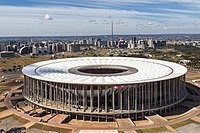
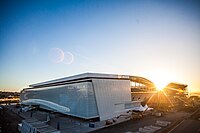
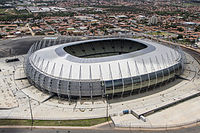
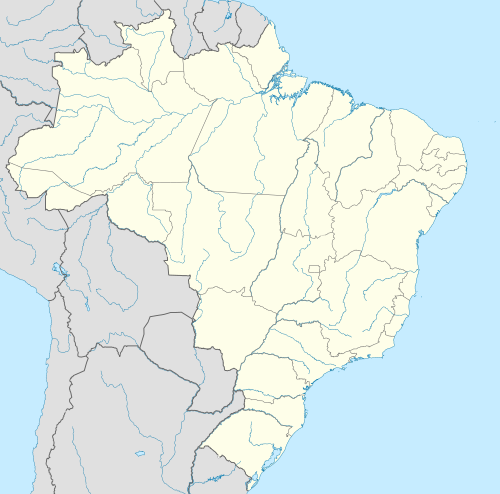


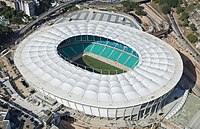
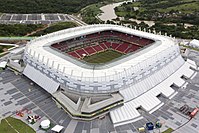
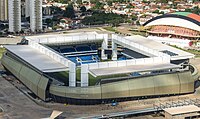

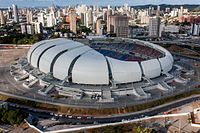
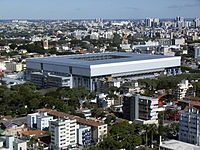
No comments:
Post a Comment